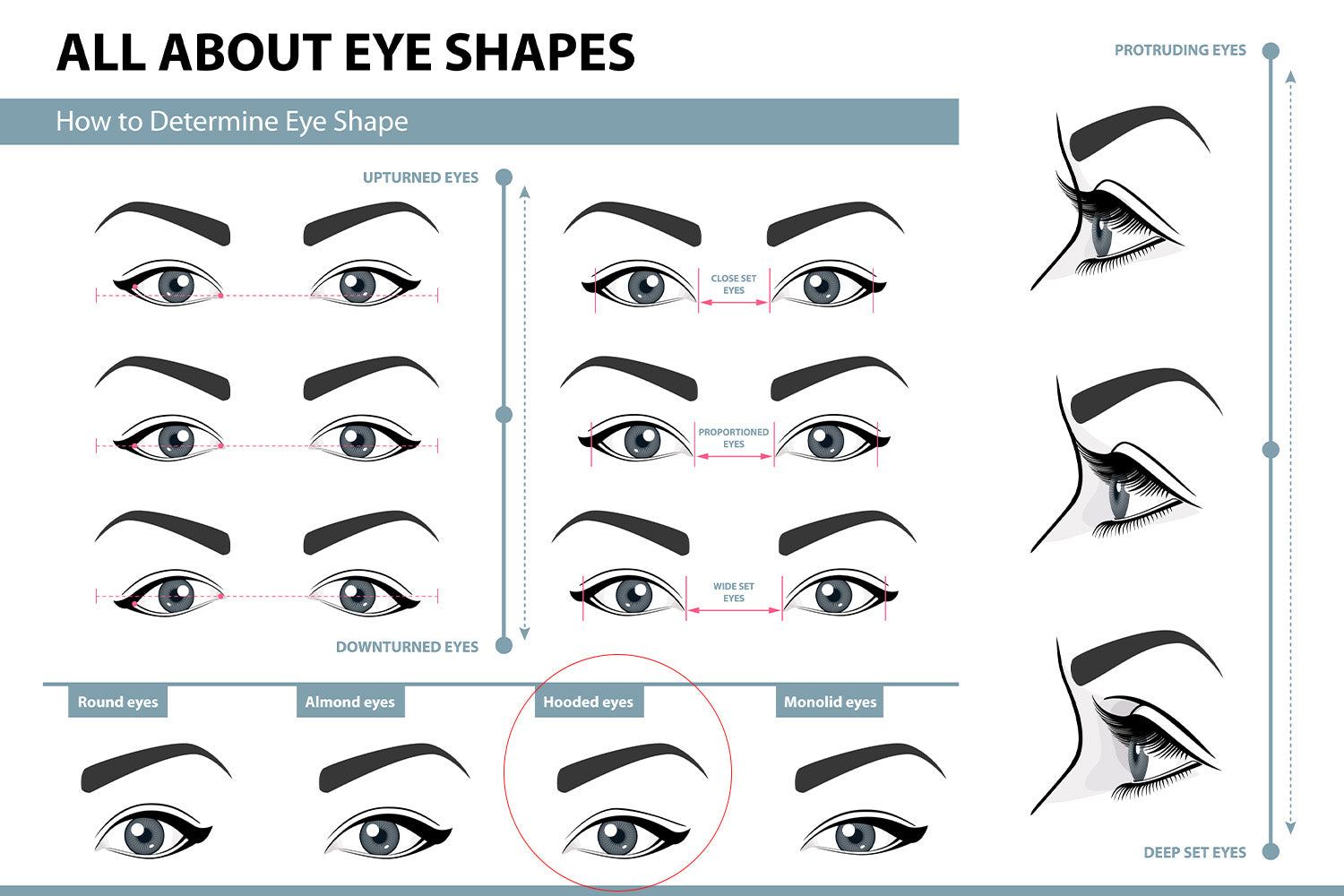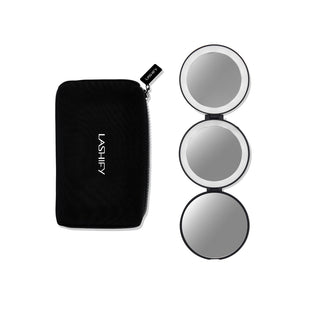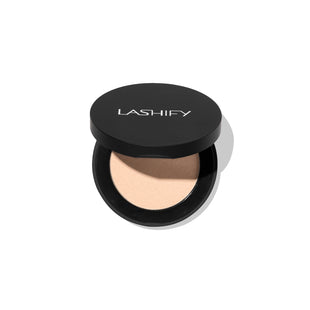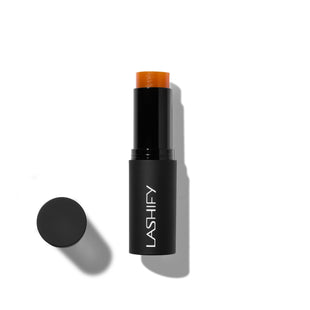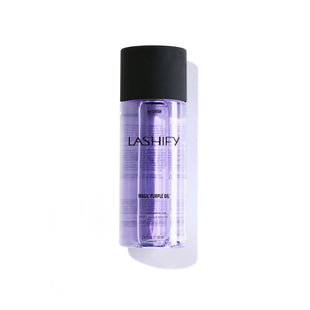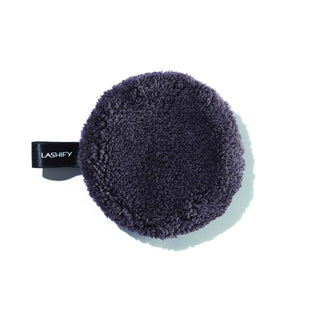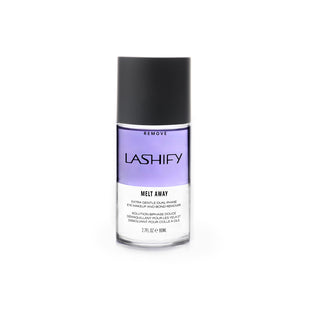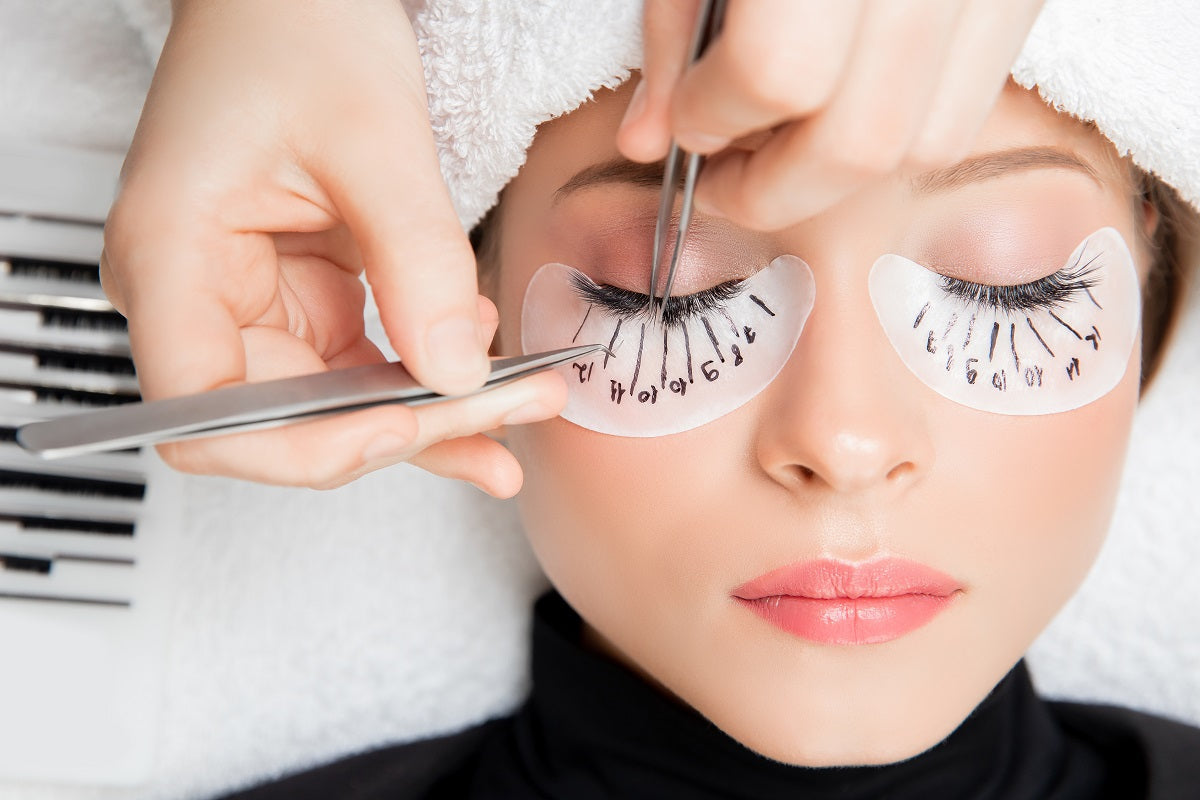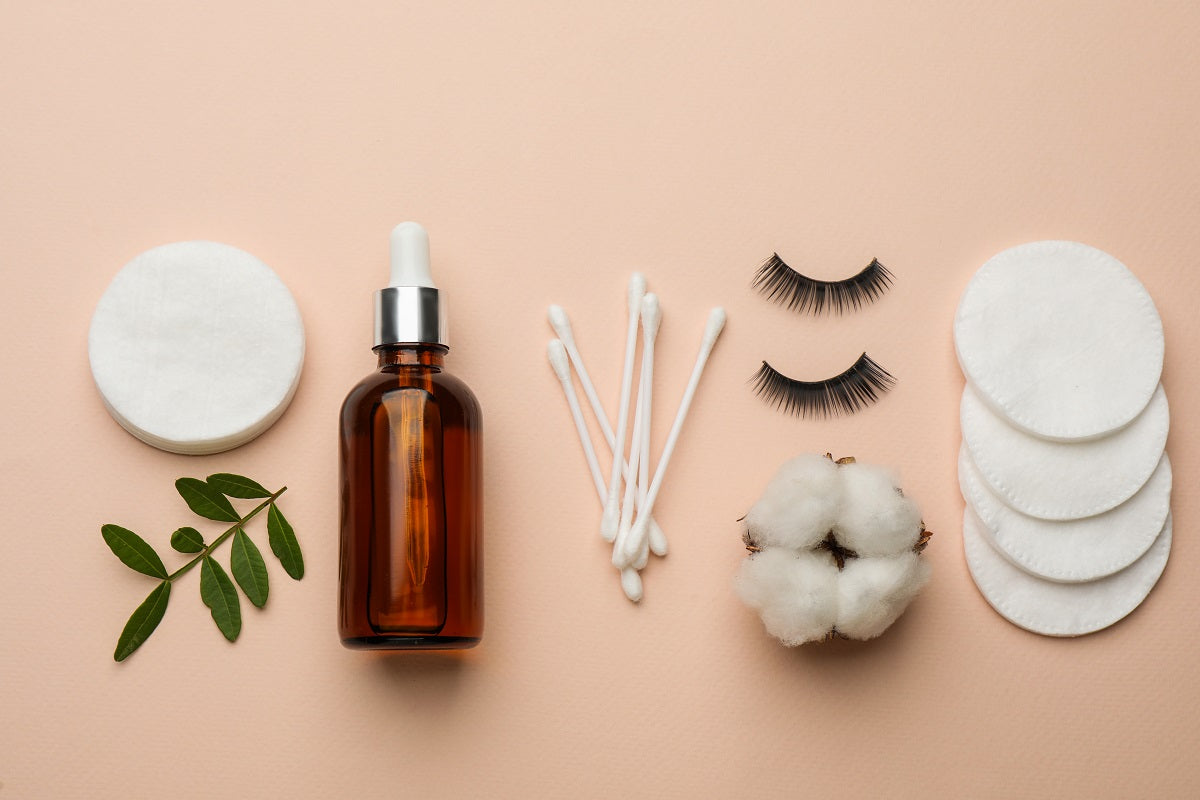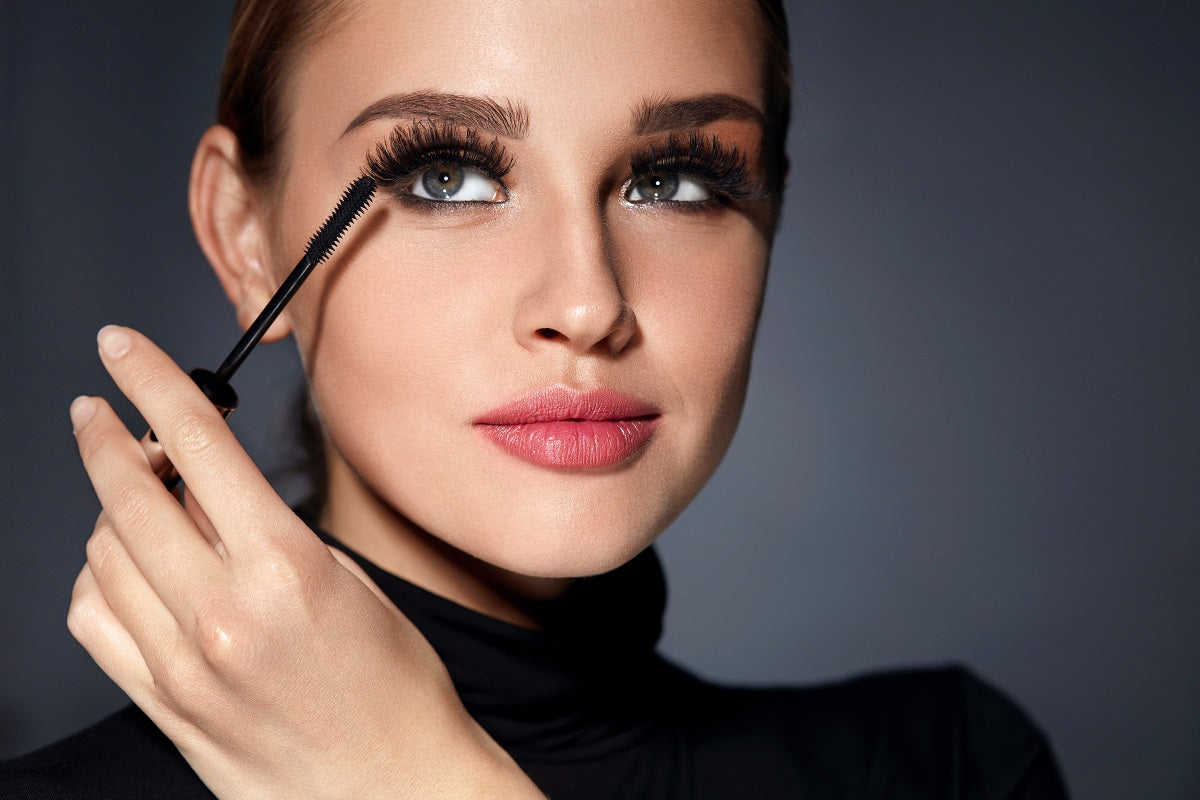Eye shapes make us unique, and even though we can classify them into specific groups, some of them seem more common than others. Hooded eyes, for instance, are particularly common and pop up in search engines along with “how to do eyeshadow” and “best lashes for.”
Hooded eyes are beautiful and mysterious, but as far as eyelid real estate goes, they don’t come with a lot. That’s okay. The experts at Lashify® can help you learn how to make the most use of your limited lot and create looks you’ll love.
We’ll cover what hooded eyes are and compare them to a few other eye shapes. We’ll also talk about how to find out if you have hooded eyes, and give you plenty of tips on how to style them if you do. Hint: You can use Lashify Gossamer® lashes to create the illusion of lengthier looking lids.
Eye Shapes 101
Eye experts have identified ten specific eye shapes. They include almond, round, monolid, deep-set, downturned, upturned, close-set, wide set, and hooded.
- Almond eyes. Just like they sound, almond eyes look like almonds sitting on their sides. These eye shapes are wide in the middle and taper towards each edge.
- Round eyes. Round eyes are round in shape, but to tell if you have round eyes you can simply look in the mirror. If you can see the whites of your eyes all around the colored part (the iris) you likely have round eyes.
- Monolid eyes. Monolid eyes have an upper eyelid that has no visible crease. Many people of Asian descent have monolid eyes.
- Protruding eyes. This eye shape features eyes that pop. The eye itself may look like it sticks out further from the eye socket.
- Deep-set eyes. These are eyes that are set further back into the eye sockets. So instead of looking like they pop, they appear slightly recessed.
- Downturned eyes. The outside corners of the eyes angle downward.
- Upturned eyes. You guessed it, the outside corners of someone with upturned eyes angle upwards, towards the temple.
- Close set eyes. This is more of an eye location rather than an eye shape. Close set eyes are closer to the bridge of the nose, and the bridge of the nose is more narrow.
- Wide set eyes. Like close set eyes, this eye shape is more about location. Wide set eyes are further away from the bridge of the nose, but both close set and wide set eyes can have other shapes, like round or almond.
- Hooded eyes. Hooded eyes have an additional fold of skin that rests below the brow bone and folds over the crease in the eyelid.
Hooded eyelids can be challenging, because less of the actual eyelid itself is visible due to the excess skin on the brow bone. Curious whether or not you have hooded eyes? Let’s find out together.
How to Tell If You Have Hooded Eyes
All you need to do to find out if you have hooded eyes is look in the mirror. Can you see your upper eyelid skin without looking down or holding your eyebrow up? If so, you probably do not have hooded eyes.
If it’s difficult to see your upper eyelid, or if your eyes seem to recede behind your brow bone, you probably have hooded eyes. You might also notice a fold of skin near your eyelid crease. This is a tell-tale sign of hooded eyes.
What Causes Hooded Eyes?
Short answer: genetics. Long answer: time. There are essentially two reasons why someone might have hooded eyelids. The first is due to genetics. If one or both of your parents have hooded eyes, there’s a higher likelihood you’ll have them too.
The second reason is due to age. As we get older, changes in the skin cause it to lose some of its elasticity. The fragile skin around the eyes tends to lose elasticity and volume faster because it’s already very thin. This is why the eye area shows the signs of aging faster than other areas.
Solutions for Hooded Eyes
If you were born with hooded eyes, which incidentally are thought to be sultry and mysterious, you simply need to know how to properly apply your makeup and use techniques (like lash extensions) to make the eye appear more open.
If you’ve developed hooded eyes over time, you’ve got a few options. If your hooded lids are interfering with your vision, you can consider treatment options like eyelid surgery with a plastic surgeon. An eye lift, also known as a blepharoplasty can remove the excess skin under your brow bone. You can have these types of procedures for cosmetic reasons, too, but keep in mind that cosmetic surgery is expensive, not covered by insurance, and can have a lengthy recovery time.
If plastic surgery is a little too intense, consider making your hooded lids work for you, by opting for eye makeup and lash techniques that give your eyes natural lift.
The Best Non-Surgical Options for Hooded Lids
You don’t need an eyelid lift if you have hooded lids. The skin folds that cover your lids are just fine where they are, and you can use makeup techniques to naturally lifted-looking lids without any surgical procedures.
Eye Makeup
One of the best ways to create a more open, youthful appearance, is by using eye makeup techniques that create an open, awake looking eye. If you have hooded lids, this can be tricky. Your lids are naturally covered in extra skin that can make them appear heavier.
To lighten the look, consider using less. On your lid and on your brow bone, focus on a singular shade of color that is lighter than your natural skin tone. You can always apply a darker color to the outer corner of your eye, but avoid putting it directly in your crease, which can make it look like you have heavy, droopy eyes.
Eyeliner
Winged liner rules for hooded eyes. The look of winged liner creates a dramatic lash line and helps lift the outer corner of the eye upward. Not great with winged liner? That’s okay. Lashify I-Line™ Gossamer lashes to the rescue. These are our first pre-mapped set of Gossamer lashes that give the illusion of a perfectly applied winged liner without any of the liner (or the expertise).
The I-Line Gossamer lash set has a perfectly angled application that creates an illusion of winged liner, and looks best when applied side by side. This lash is for experienced Lashify mavens, so if you’re just starting out with the Lashify DIY Lash Extension™ system, give yourself a few weeks of Core Gossamer application practice before trying these.
Mascara
If you have hooded lids, applying mascara can seem arduous. It usually involves lifting your seemingly droopy eyelids to create space to apply the makeup. Give your lids a break, and skip the mascara altogether.
Hooded lids aren’t actually droopy, they’re simply heavier than other types of lids. Working with them instead of against them can help you enhance their look. Instead of mascara, we recommend styling your lashes with lash extensions. With lash extensions, you’ll:
- Never end up with smudged or smeared makeup on your lid or brow bone
- Avoid having to pull and tug on your eyelids to apply mascara
- Get more volume and length than any mascara can provide
- Be able to get lashes that perfectly compliment your lids and your look
If you’ve never tried at-home lashes, the experience might seem a little daunting. That’s okay. That’s why Lashify was born; to create a solution for getting salon-looking lashes at home with any level of expertise. Using lashes to create a more open, awake eyes is one of the easiest and convenient non-surgical treatments you can use.
How Lashify Works
The Lashify system is different from other at-home lash systems. Our entire system uses hypoallergenic products that are safe for even super sensitive eyes. From the way our Gossamer lashes are created to the way they are worn and removed, everything about our lashes is unique.
Gossamer Lashes
Our Gossamer lashes are cruelty-free and made from 100% Korean PBT silk. Each Gossamer lash contains numerous lash fibers attached to a featherlight spine that is just a few millimeters long. These Gossamers are then applied to several natural lashes, allowing the weight of the lashes to be distributed more evenly for a more comfortable fit.
Application
We use Underlash Technology™ to apply our Gossamer lashes. This means that your Gossamer lashes will be applied beneath your natural lashes, close to your waterline. This method of application is more forgiving for beginners and also helps keep your lashes comfortable while you’re wearing them.
Bonds
At Lashify, we don’t think your lash enhancement should be harmful to your natural lashes. A common cause of broken and brittle lashes is lash glue. Both salon and at-home lash glues can contain chemicals like formaldehyde and cyanoacrylates. These chemicals can cause your natural lashes to become brittle and break. If these chemicals get into your eyes, they can even cause vision problems.
At Lashify, we don’t use glue for our Gossamer lashes. Instead, we use Bonds. Bonds are formulated like lash serums, with biotin and lavender to help support your natural lash growth.
Bonds also never fully harden, allowing your Gossamer lashes to bend and move with your natural lashes to avoid breakage.
Wearability
Most at-home lashes last a few hours or possibly a full day. Gossamer lashes are designed to be worn for up to 10 days with proper care. Once you’re done with them, you can remove them from your natural lashes and store them until you’d like to wear them again. You can wear and re-wear Gossamer lashes numerous times before they need replacing.
Your hooded lids are seductive, why not play them up with equally sultry lashes instead of considering invasive eye surgery or painful dermal fillers? All you need to get started is a little control.
Take Control of Your Lid Life
Hooded eyes are a prize, and you can make the most of them by grabbing the DIY Lash Kit. It contains everything you need to get started with the Lashify system and enjoy lashes that magically lift your lids and create a seriously youthful appearance.
Each Control Kit comes with:
- Two sets of Gossamer lashes. Pick from the Curl, Amplify, or Bold collection of Gossamer lashes. All Core Gossamer lashes are available in varying lengths. If you aren’t sure which length is right for you, check our A-Eye tool for help.
- Fuse Control® Wand. Don’t show up unprepared. The Fuse Control Wand is made specifically for Gossamer application and is ergonomically designed to feel comfortable and lightweight in your hand and smooth across your lids.
If you have smaller eyes and hands, try the Petit Curve Wand, which is uniquely designed for smaller features.
- Whisper Light Bond™. This dual-sided bond comes in clear and black for perfect application and touch-ups. Whisper Light never leaves a sticky residue behind and keeps your Gossamer lashes locked tight.
- Glass Finishing Coat. Gossamer lashes are created to be worn for up to ten days, but you can increase their ability to last by coating them with Glass Finishing Coat. In between applications, a coat of Glass will help reactivate your Bond and give your Gossamer lashes more staying power.
- One pair of Wandom® Wand Covers. Wandoms never let you find yourself in a sticky situation. Bonds never fully harden, which means they feel tacky during application. Keep your Gossamer lashes from sticking to your Fuse Control Wand by covering the tips with Wandoms.
- Samples. Each Control Kit comes with free samples of Melt Away and Pre Cleanse. If you love them, you can come back for the full sizes.
Everything comes in a protective hard case so you can always find your lash tools when you need them. Cosmetic procedures? No thanks, we’ll just work smarter not harder with Lashify.
Hoodies for Life
Join the ranks of Jennifer Lawrence and Taylor Swift, two hooded-eye beauties who use lash extensions and makeup techniques to create glamorous looks with their hooded eyes. If your friends ask you if you’ve had some kind of surgical rejuvenation, just bat your lashes and send them to our website.
Sources:
What's My Eye Shape? (Learn How to Tell Here)
Hooded Eyes - All About Vision
Eyelash Extension Facts and Safety - American Academy of Ophthalmology
